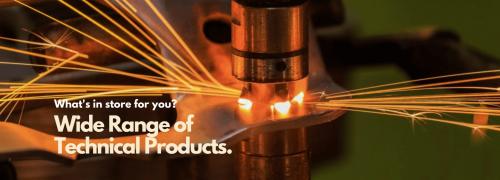How to set up your MIG welder for Aluminium Welding?

Introduction:
Aluminium has high heat conductivity and this material also forms a layer of oxide (Aluminium oxide) as soon as it is exposed to the air. To begin welding, the welding arc must drill through this layer first. Moreover, the melting or softening temperature of aluminium is comparatively lower than that of steel but at the same time the melting temperature of the oxide layer formed on its surface is much higher than aluminium itself. Another challenge is to weld the material that is thinner. As a result, the quality of the weld could be largely hampered in the beginning because most of the heat gets drawn away from the weld pool as the temperature of the material is at its lowest. Challenges like – burn through, puddling, distortion or cratering can’t be avoided. In-addition, not only aesthetically pleasing welding cannot be derived, it might become challenging to initiate the arc as well.
Nonetheless, it is possible to weld aluminium with comparatively basic MIG welding machines successfully, if the accurate machinery is used ensuring the best established ways and appropriate process.
In this article we will concentrate on,
What are the correct settings a MIG Welder must practice for Quality Aluminium Weld?
To make things simple, let’s go step by step discussing how to avoid the generic problems faced during MIG welder settings:
It’s essential to use Spray transfer contrary to Short Circuit transfer:
To weld steel, short circuit transfer is used. But in the case of aluminium, spray transfer is more appropriate. In this technique, the trigger of the MIG gun is released and the arc comes out only after the release. The arc initiation and stability is achieved once the wire touches the metal. The wire dissolves and accumulates the filler wire in very small/miniscule droplets that are sprinkled into the weld pool, instead of melting into huge globs of metal.
The voltage (minimum 20-24V required) and the wire feeding speed must be raised in sync with each other. The voltage also depends upon the density of the part to be welded and the welding machine. One of the flaws of spray transfer is that the material can be easily burnt through or distorted because of the high heat input and hence requires more expertise. But if done with finesse, it also creates a remarkably high liquid weld pool, grants huge speed of travel, increases the input of heat in the material and reduces splatter.
Connecting a Push-Pull Gun or a Spool: Is it a necessity?
These torches are not supported by every MIG welder and are not universal. These can be substitutes to the regular MIG torch lead. For some of the spool guns, a power cable is essential and is to be connected in the front panel of a welding machine. While for others, the welding lead (which caters shielding gas) supplies the power. You can go through the manufacturer’s website if you are doubtful whether your welding machine supports the guns or not and if you already own the one that does then attach all the things adhering to the procedure provided.
How to set the wire feed speed?
As compared to mild steel welding, MIG weld aluminium requires substantially greater speed than of the wire feed. A MIG Settings Chart is generally provided in either the inside compartment of the machine or in the user manual. In case there is no such chart found, the basic criterion is to increase the speed by 30-100% higher than that of used for welding mild steel.
What to set Polarity to?
Similar to welding steel, it’s recommended to set the polarity to Direct Current Electrode Positive (DCEP) while aluminium MIG Welding too. Whereas only for the procedure of flux-cored welding, it’s set to DCEN – Direct Current Electrode Negative.
How to determine the Amperage Output?
The wire feed speed decides the Amperage Output. As the speed increases, penetration also deepens and the weld metal also requires additional amperage. The definite amperage output relies on the welder brand also for a given wire feed speed. For instance one machine using 400 IPM of wire speeding feed may derive 200A output as well as another machine may derive 180A output with the same wire feeding speed.
Moreover, the amperage output is affected by the diameter of wire too. The amperage output derived is lower if the wire is thicker and it also requires higher wire feed speed too as compared to thinner wire.
What is the flow rate of Shielding Gas dependent on?
Generally for all the aluminium welds, 100% Argon Shielding Gas (less expensive) is used as a High Shielding Gas Flow Rate of a minimum of 20 CFH (Cubic Feet per Hour) is required for aluminium MIG Welding as the torch requires moving swiftly. But you must increase the flow to 30 CFH if any porosity is observed.
Nonetheless, if the piece of aluminium to be welded is thick and/or there is a lack of strength and power is low in your machine, then to generate more heat and deepen the penetration, Helium, which is lightweight as compared to argon and air, is added in the mixture. Hence, relying upon the percentage of helium in the mixture, you may need flow rate even as high as 50 CFH.
Conclusion
MIG welding of aluminium is complex if you are a beginner but not as tough as it has been anticipated. Also, when compared to TIG welding of aluminium it is much simpler. If you follow all the guidelines properly, you can achieve quality weld. It’s always advisable to run test welds on a piece of scrap before welding the actual workpiece.
We would be glad to have feedback from our readers. It helps us to give better output every time, when we get connected to our viewers. Keep viewing, keep learning and stay connected with us.
Post Your Ad Here
Comments